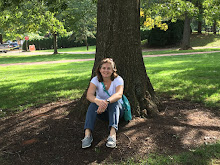Below you will see additional images of learning environment designs created using a variety of paper building and collage techniques. Notice the color, variety and ingenuity used in the designs.
The above environment features symbols for resources such as funding, people and transportation to access learning opportunities beyond the classroom.Natural and playful elements like the tree and the slide to enter the classroom make learning fun and exciting.
The environment above features a variety of working, meeting and seating areas as well as access to the outside (on the right).
The environment above features a variety of working, meeting and seating areas as well as access to the outside (on the right).
The hearth adds warmth and a sense of home while the central circle features a meeting place that can transform and take advantage of technology by projecting on the ceiling depending on the needs of the learning meeting and subject.
Lofts, lots of books and cozy nooks for reading are of utmost importance.This designer really valued quality supplies and took the care to create these mini supplies for her worktable.










